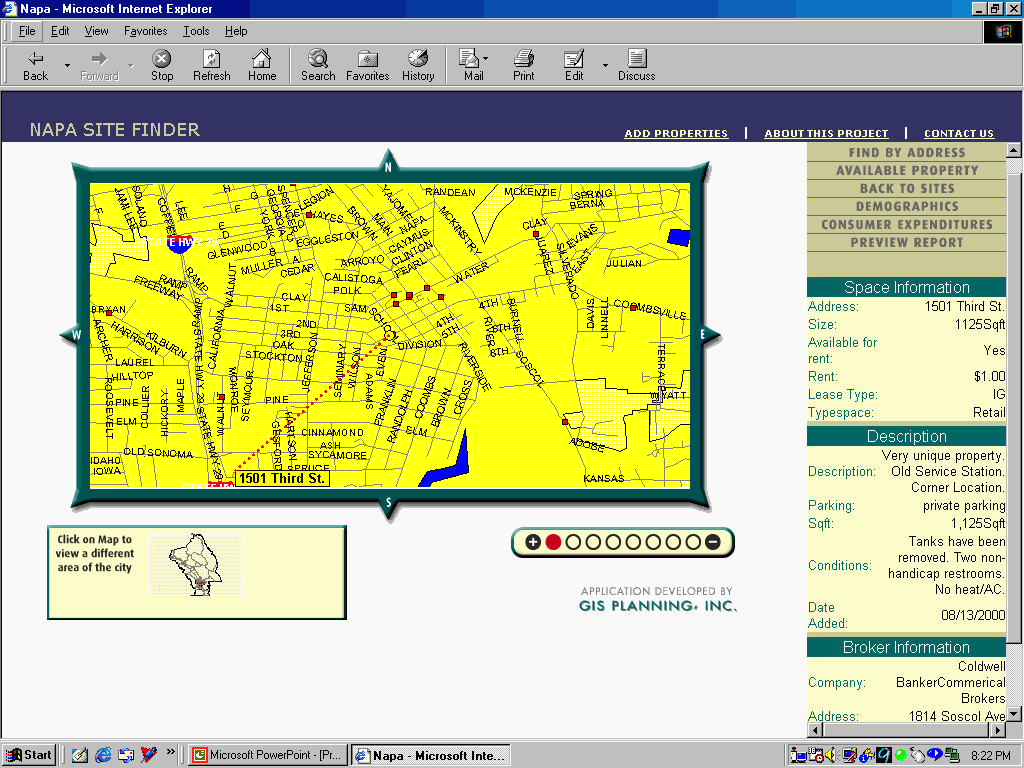CALIFORNIA COMMUNITY COLLEGES ASSISTING ECONOMIC DEVELOPMENT GROWTH
Richard Della Valle, ED>Net, Napa Valley College, Napa CA.
Pablo Monzon, GIS Planning, Berkeley, CA.
The world is different across the Bay Bridge from San Francisco, beyond the Oakland Hills, thorough the Caldecott Tunnel, in the Interior San Francisco Bay region. To answer this difference in cultural and economic mindsets the CANS Economic Development Consortium was established in Fall 1998. The CANS (Contra Costa, Alameda, Napa and Solano Counties) Consortium consists of four major college districts bound together with common needs in the areas of vocational and occupational training for the purpose of economic development and welfare reform training. This group is currently seeking federal and state assistance to develop a regional economic development approach. Phase I has already been instituted with grants from the Chancellor's Office and DOE matching monies. This project involved the establishment of classroom based distance learning equipment (Picture Tel 2000) placed at all member colleges environmental technology laboratories.
Phase ll of the project was the development of targeted curriculum for the CANS region. The targeted industry cluster for this application was Information Technologies. Development of new technology in Geographic Information Systems (GIS) and Information Systems Technology (IT) is critical to the CANS region. GIS is among the most promising and universally applicable of the new technologies in the field of decision analysis. Recent work by EDD and ABAG (the Association of Bay Area Governments) has shown that by 2005 more than 85% of all jobs in our region and statewide will be service and informational based. Dramatic residential and business growth regionally dictates an urgent need to be filled.

Diablo Valley, Napa, Las Positas, Chabot and Solano colleges unified to develop a GIS project to assist California's economic development future. This unlikely group of normally competitive colleges worked collaboratively for the first time under a California Community Colleges economic development grant issued by the Chancellor's Office. The project's goals were to enhance California's economic growth by developing internet based tools in GIS that would assist small-medium sized businesses (and entrepreneurs) choose commercial real estate for their potential business ventures. The site developed is located at http://www.communitygis.org and (at the time of this writing) is beta tested for Napa County only. The site was built using Map Objects. The project also had a second and more important goal. This goal was to teach basic GIS computer based skills to California Community College students. GIS skills are an important asset in today's job market. In a beta-testing model, Napa Valley College assigned student interns the task of inputting all the commercial real estate data for Napa county. Students were given commercial real estate data gathered by the Napa Valley Economic Development Corporation (NVEDC). This data is currently being updated monthly by the NVEDC. The commercial real estate finder developed does the following:
The site was designed by GIS Planning and is hosted by Diablo Valley College.
The Napa Economic Development GIS project created communication between education, business and government interests. It is hoped that colleges will use this model statewide and nationally. Visit this site and you will find a true virtual partnership that links education, business, government interests and jobs.
Information about ED>Net can be found at http://www.ednet.cc.ca.us
Information about the Environmental Initiative can be found at http://www.rebrac.org
Information about GIS Planning Inc. can be found at http://www.gisplanning.com
Presentation Slides:
What is Economic Development
What is Economic Development for the Community Colleges
What is ED>Net?
Chronology of Economic Development in the California Community Colleges
Economic Development Projects
Strategic Initiatives
Environmental Technology
Information Technology Initiative Proposal
GIS/CANS Industry Driven Regional Collaboration Goals
Link Colleges with Businesses
Examples:
Assist Small-Medium Sized Businesses
Useful Skill Sets for Students
Assist Government/Non-Profit Agencies
Summary